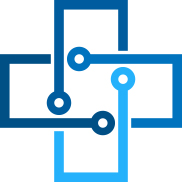What is FHIR and Why it’s Important
Data practitioners in healthcare have long been aware of the Health Level Seven International (HL7) data exchange and information standards. This standard, created over 20 years ago, was complicated to implement, and has seen many iterations.
The original goal of the standard – to reduce information isolation and variations in how patient data is stored hasn’t changed.
And now, with the advent of the Fast Healthcare Interoperability Resources (FHIR) standard, developed on top of HL7, healthcare data interoperability is easier to implement. For example, Apple’s iPhone Health App accesses FHIR-compliant medical records.
At the heart of FHIR is simplification without sacrificing information integrity.
 This is accomplished by creating an information exchange centered on the information itself, rather than on documents. Even today, much of our health information is exchanged at the static document level – fax, email, and attachments in electronic health records.
This is accomplished by creating an information exchange centered on the information itself, rather than on documents. Even today, much of our health information is exchanged at the static document level – fax, email, and attachments in electronic health records.
By sharing information at the data (not document) level, patients won’t have to enter the same data over and over again for each Provider they visit.
And Providers, including physicians, will have patient data precisely when they need it within existing workflows.
FHIR has been in development, and in trial use since 2014. What has really stirred the pot, however, is the recent Office of the National Coordinator for Health Information Technology (ONC) ruling that requires access to all electronic health information at no cost (to patients).
The flipside of this ruling are consequences for Providers accused of information blocking, a practice that interferes with, or prevents access, or use of electronic health information. And the violation is expensive – up to $1 million per violation.
Today’s healthcare data systems must adapt to the expectations of open-access-patient-information. And patients will come to demand increased access to their own information.
Research firm Gartner, Inc. expects that by 2023, 20% of all electronic health information exchange will be patient-mediated.
A Dream of The Future?
Healthcare data interoperability is clearly no longer a dream of the future. It is the realization of the original intent of electronic records.
External solutions providers will be utilized to integrate non-compliant and document-based patient health records to support patient and third-party health information access. This will happen through APIs between information storage and electronic health record systems.
And the focus of data interoperability won’t just be between providers and patients. Insurance providers and payers will also require access to standardized data.
The modern healthcare experience isn’t just about improving the integration and exchange of data.
It’s about orchestrating all aspects of patient care with the goal of improving patient care, providing on-time treatment, preventing disease, reducing medical errors, and ultimately providing the best possible patient experience.